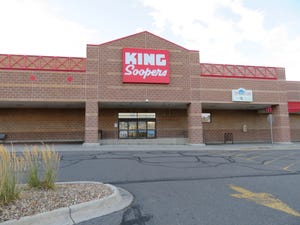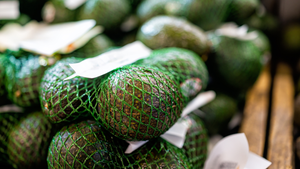CANDY SALES HOPPINGCANDY SALES HOPPING
The fight against childhood obesity and health and wellness trends are spurring incremental sales of antioxidant-rich dark chocolate this Easter season. But when it comes to basket fillers, traditional favorites like milk chocolate bunnies, caramel filled chocolate eggs, marshmallow chicks and jelly beans still reign supreme. Lakeland, Fla.-based Publix Super Markets didn't change its seasonal assortment
April 2, 2007
LIZ PARKS
The fight against childhood obesity and health and wellness trends are spurring incremental sales of antioxidant-rich dark chocolate this Easter season. But when it comes to basket fillers, traditional favorites like milk chocolate bunnies, caramel filled chocolate eggs, marshmallow chicks and jelly beans still reign supreme.
Lakeland, Fla.-based Publix Super Markets didn't change its seasonal assortment to respond to health and wellness concerns any more aggressively this year than other years, noted spokeswoman Maria Brous.
“For Publix, it's always been about variety,” she said. “We've had baskets that focus more on toys with just a little bit of candy, and baskets with more non-chocolate candy and vice versa. We put the products out and let the customers make the choices. You can be a smart consumer and still have children enjoy the holiday and get what they want.”
Quincy, Mass.-based Stop & Shop, on the other hand, expanded its Easter assortment to include more sugar-free candy this year.
“It's important for us to make sugar-free candy available to our customers as a healthier alternative,” said spokesman Rob Keane.
Stop & Shop has been aggressively promoting its seasonal candy selection during the weeks leading up to Easter.
“Everything we do, from store signage to our weekly circular, communicates the whole basket-building concept,” Keane said. “Parents can find everything they need to build a basket this holiday, including all varieties of Easter-themed candy.”
The retailer cross-merchandises plush toys, baskets, Easter grass and chocolates in the same section “to get the best results possible,” noted Keane.
Scott Bise, candy category manager for Abingdon, Va.-based K-VA-T, which operates 95 Food City supermarkets, reported favorable Easter candy sales.
“We feel we're going to have good sell-throughs, even though there is a one-week-shorter selling period this year,” he said.
The sugar-free candy that Bise began sourcing this year is selling well, but he noted that the category leaders, particularly Hershey's and the traditional Easter brands like Peeps, continue to be the most popular.
Easter candy sales have been so strong at Marengo, Iowa-based Big G Food Stores that owner Garth Graftt expects that it will sell out before the holiday.
“We have a big selection, and all varieties seem to be selling well,” he said. “Our 99-cent chocolates and bagged candy are doing super, and so are all the standards, the chocolate bunnies, eggs and rabbits, the marshmallows and jelly beans.”
Graftt did not source any healthier versions of Easter candy this season.
“We're in the Midwest, and people aren't that worried about those concerns at Easter,” noted Graftt. “Parents and grandparents like to buy candy and give it to their children, and here people also buy wrapped candy to put out in their yards for Easter hunts.”
Schenectady, N.Y.-based Price Chopper Supermarkets employed a more health-focused merchandising strategy this year by integrating a broader selection of dark chocolate and gourmet Easter candy.
“Category sales are up significantly versus last year, and we've experienced no cannibalization of the traditional brands,” said Price Chopper spokeswoman Mona Golub.
“We put a focus on dark chocolate in tune with the growing focus on the health benefits of dark chocolate.”
Bill Grasch, co-owner of upscale Grasch Foods, Brookfield, Wis., noted that this year consumers “were most definitely going for dark chocolates. We ordered more candy this year than we did last year, and we have a lot of variety. As fast as we put it out, we sold out.”
He reported strong sales of a local brand of dark chocolates called Buddy Squirrel, Milwaukee. Groovy Candies' Easter Gummy Bunny Teeth are also selling well at Grasch Foods.
“We can't get enough of them on the floor,” said Grasch. “Each company had something nice and new. We gave it all a nice presentation, kept it neat, and the customers took it from there.”
Jim Corcoran, vice president of trade relations for the Vienna, Va.-based National Confectioners Association, reports that sales of candy at Easter increased 7% last year, and he projects that sales this year could be just as strong.
“With Halloween, we saw almost a 3% increase last year,” said Corcoran. “Valentine's Day was flat, and Christmas grew 1%, but Easter continues to be a major bright spot for the confectionery industry.”
Industry sources are not surprised at the category's good showing. Even some nutritionists concede that Easter candy deserves its place in the Easter basket.
“There are no bad foods, only bad diets,” said Marilyn A. Swanson, maternal and child health national program leader for the U.S. Department of Agriculture's Cooperative State Research Education and Extension Service program. “Most foods can be good for you, if eaten in moderation.”
Corcoran agrees. “People are concerned about their entire diet; they are certainly not singling out the candy category,” he said. “Consumers know that candy is a treat, it is not a food substitute and it can certainly fit into a healthy lifestyle.”
Among the brands selling particularly well this Easter were dark chocolates from Lindt and Ghirardelli, as well as favorites from Cadbury Schweppes, Peeps, Russell Stover, Brach's, Jelly Belly, R.M. Palmer and seasonal Easter candy from M&M/Mars, Nestlé and Hershey's.
Variety is key when it comes to driving Easter candy sales, noted Corcoran.
“We recently did a survey, and during holiday seasons, almost 30% of consumers said they would not buy a substitute candy if the item they were looking for was not available,” he said. “Especially at Easter you're dealing with very personal preferences. Some items are considered traditional, and consumers will go out of their way to get those products.”
Jungle Jim's, a 300,000-square-foot supermarket/farmers' market in Fairfield, Ohio, carries a huge variety of candy, merchandising it both on shelf and in innovative displays.
The retailer's candy category manager, Marion Stricker, said jelly beans and novelty candy that you “can't find in Kroger's or Meijer's” were early sell-outs.
Stricker noted that customers aren't holding back and purchasing less candy because of concerns about diet or health. At Jungle Jim's, however, they are purchasing more dark chocolate this year.
Jungle Jim's specializes in creating a fun shopping environment through the store, so this year Stricker merchandised her Easter candy in bumper cars that Jungle Jim's bought from an amusement park that was going out of business.
This year, too, supermarkets had a growing selection of candy options for parents whose children may have allergies.
Among the offerings were R.M. Palmer's gluten-free chocolates; Miriam Diamond's Nana's Originals collection of No Wheat and No Gluten cookies and chocolates; and Atlanta-based Innovative Candy Concepts' Too Tart SmartChoice.
Seasonal Candy Sales
| HOLIDAY | 2005 | 2006 | % CHANGE |
|---|---|---|---|
| Valentine's Day | $970M | $971M | 0.1% |
| Easter | $1.7B | $1.8B | 7.0% |
| Halloween | $2.0B | $2.1B | 1.5% |
| Christmas | $1.3B | $1.3B | 1.0% |
| Source: National Confectioners Association, based on input from Information Resources Inc., NCA/CMA Monthly Shipment Reports and U.S. Department of Commerce | |||
About the Author
You May Also Like




